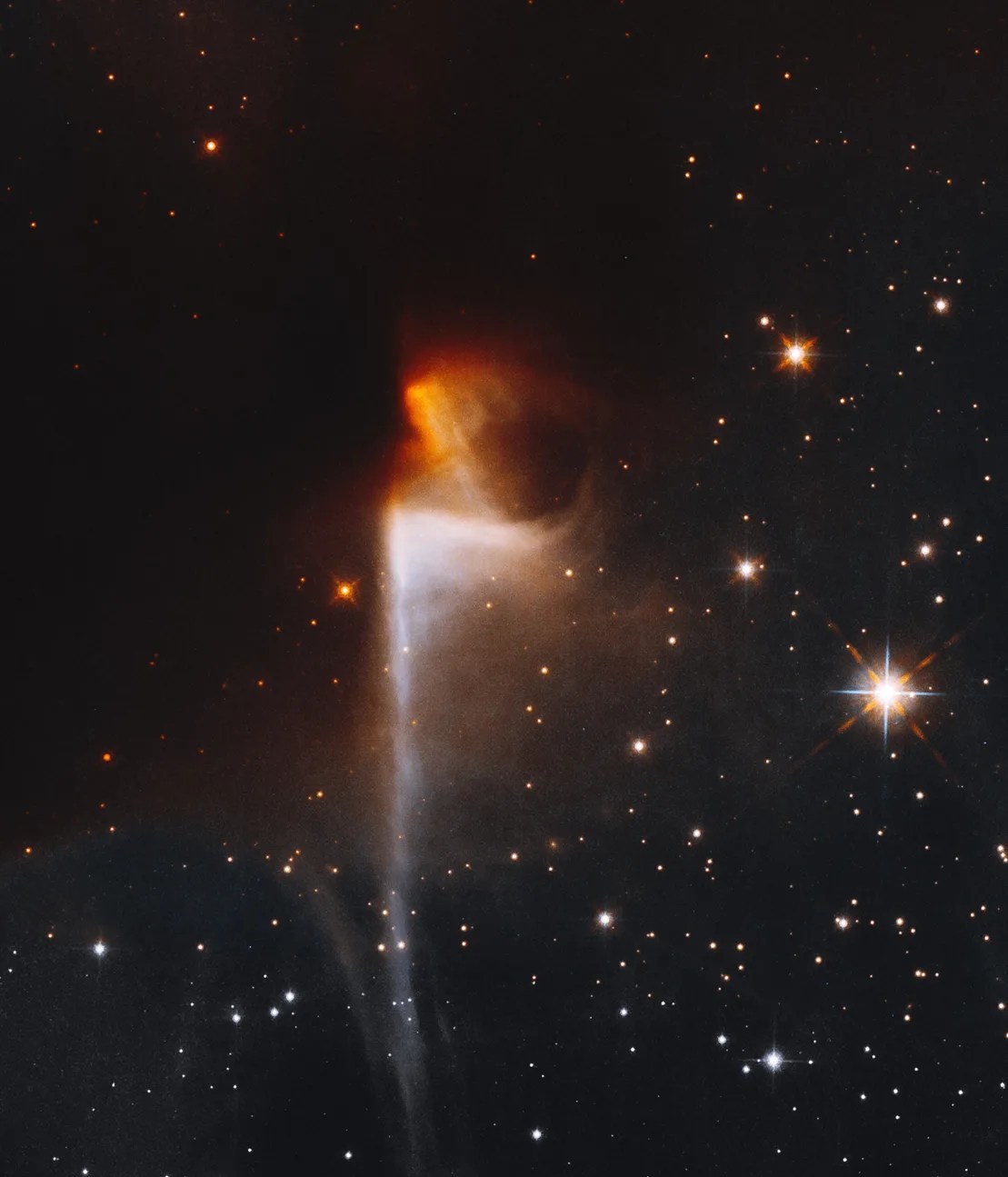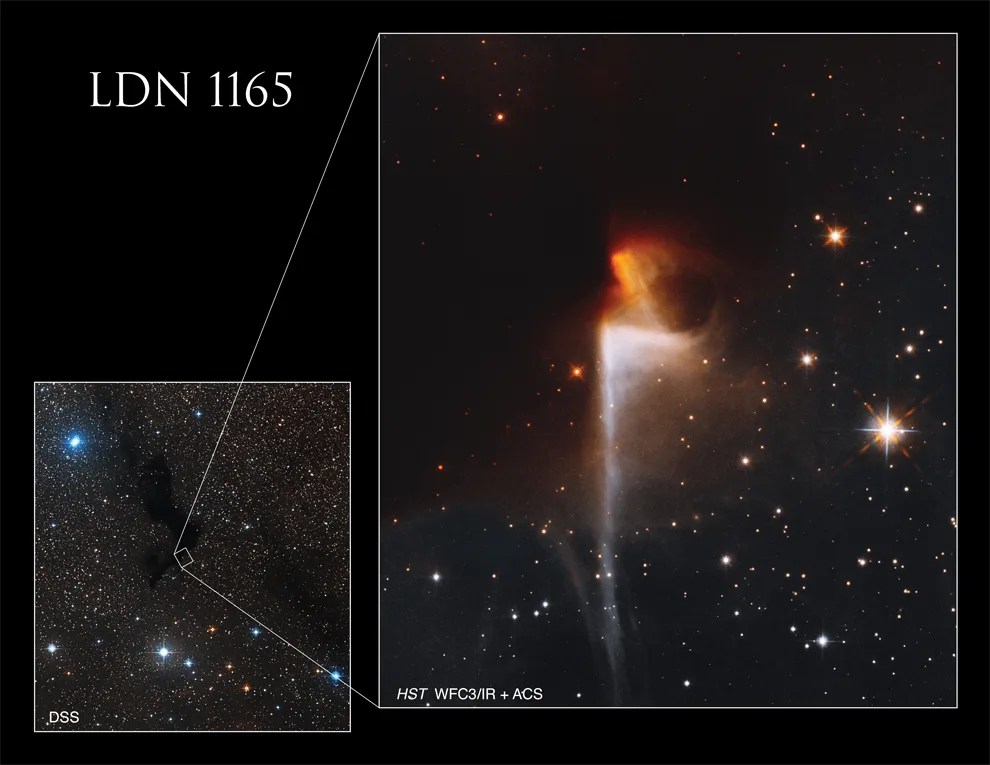1 min read

This Hubble image captures a portion of a dark nebula in the constellation Cepheus. LDN 1165 is part of a collection called Lynds’ Catalog of Dark Nebulae, originally published in 1962. Dark nebulae – also called absorption nebulae – are clouds of gas and dust that neither emit nor reflect light, instead blocking light coming from behind them. These nebulae tend to contain large amounts of dust, which allows them to absorb visible light from stars or nebulae beyond them. Dark nebulae are so dark that they’ve been referred to as “holes in the sky,” but in reality they may be full of activity, with stars sometimes forming inside their dense clouds.
Hubble observed this region as part of a study of protostars, hot dense cores of newly forming stars that are accumulating gas and dust as they undergo the starbirth process. The bright area in this image is likely a star-forming region that may hold one or more young protostars. Further study of dark nebulae like LDN 1165 will help us better understand the nature of these dark and dusty clouds and the stellar nurseries that may lurk within them.

Media Contact:
Claire Andreoli
NASA's Goddard Space Flight Center
301-286-1940







